Quick Fix: Download & Update missing media Drivers Automatically
Automatically download and install the correct version of all the drivers that are missing, corrupted or out of date on your system, with just one click!
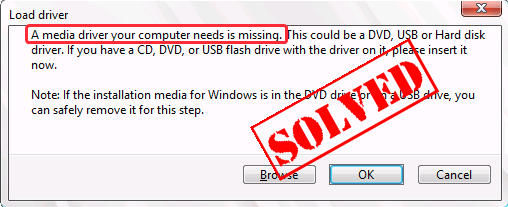
Does this look familiar? If you are getting this error message in your Windows computer, don’t worry! This is a common issue and you can fix the error easily and quickly. The error message usually reads:
How to fix A media driver your computer needs is missing
Here are the solutions you can try. You don’t need to try them all; Just work your way down until your problem is solved.
- Re-plug the USB drive
- Try another USB port
- Change the settings in BIOS
- Change the ISO file format
- Things you should do after trying these methods
Why does the error occur?
This error generally occurs when you are installing Windows on your PC/laptop. the possible causes can be:
- The speed at which the installation DVD was burned was too fast or slow
- The faulty DVD or USB drive
- The missing DVD or USB driver
- The ISO file problem
You can actually fix the A media driver your computer needs is missing error easily and quickly with the solutions below.
Fix 1: Re-plug the USB drive
You can try to re-plug the USB drive to fix the problem. Try the steps below:
1) When you see the error message popping up, click Cancel.
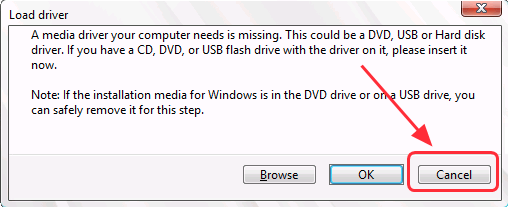
2) The Windows installation will return back, then unplug the USB drive from your computer.
3) Re-plug the USB drive into the computer again.
4) Try to install Windows again.
Fix 2: Try another USB port
If re-plugging the USB drive doesn’t work, you can try another USB port:
1) When you see the error message popping up, click Cancel.
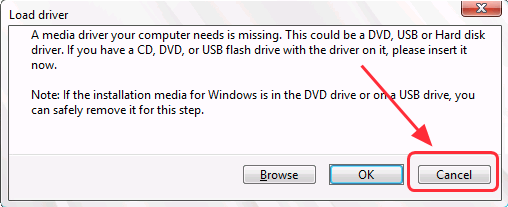
2) The Windows installation will return back, then unplug the USB drive from your computer.
3) Plug the USB drive into another USB port. If you have the USB 2.0 port with your PC/laptop, try to plug the USB drive into the USB 2.0 port.
4) Try to install Windows again to see if it works.
Fix 3: Change the settings in BIOS
The problem can also be caused by the wrong configuration in BIOS. So you can change the BIOS settings in startup.
1. Change the USB 3.0 support
Sometimes the install media doesn’t have native support for USB3.0. If there is any settings for USB 3.0 support in BIOS, change it to Auto or Disabled.
2. Change the SATA to IDE
The wrong SATA mode can also cause the problem. If your machine is using IDE, but the install media boots with SATA, it can result in the problem.
1) Boot your computer into BIOS, then go to Advanced or Storage Configuration (or Drive Configuration or IDE Configuration).
2) Go to SATA Mode (or Set SATA As, or SATA Configuration).
3) Change its option to IDE or Compatible or ATA.
4) Save the settings and try to install Windows again.
Fix 4: Change the ISO file format
The ISO file faulty can also cause the issue, so you can try to change the ISO file format to solve the issue.
Double check the extracted setup from the ISO file. If it is in NTFS format, extract the ISO file in FAT32 format and use the setup to install Windows again.
Things you should do after trying these methods
As the error message indicated, the media driver is missing in your computer, so you can try to install the missing drivers, and update the outdated drivers in your computer, in order to improve the computer performance and reduce the chances of the similar issues.
You can manually download and install the latest device drivers from the manufacturers. This requires times and computer skills. If you don’t have time or patience, you can do it automatically with Driver Easy.
Driver Easy will automatically recognize your system and find the correct drivers for it. You don’t need to know exactly what system your computer is running, you don’t need to risk downloading and installing the wrong driver, and you don’t need to worry about making a mistake when installing.
You can update your drivers automatically with either the FREE or the Pro version of Driver Easy. But with the Pro version it takes just 2 clicks (and you get full support and a 30-day money back guarantee):
1) Download and install Driver Easy.
2) Run Driver Easy and click the Scan Now button. Driver Easy will then scan your computer and detect any problem drivers.
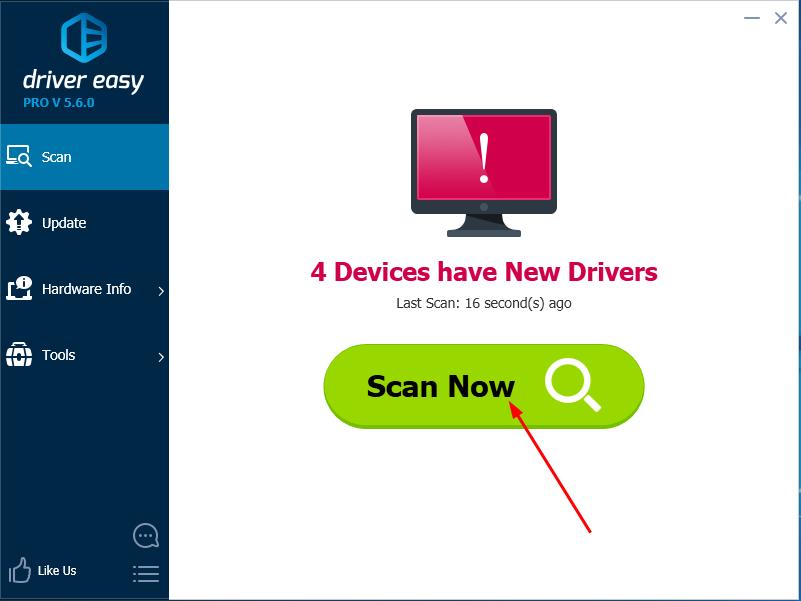
3) Click the Update button next to a flagged driver to automatically download and install the correct version of this driver (you can do this with the FREE version).
Or click Update All to automatically download and install the correct version of all the drivers that are missing or out of date on your system (this requires the Pro version – you’ll be prompted to upgrade when you click Update All).
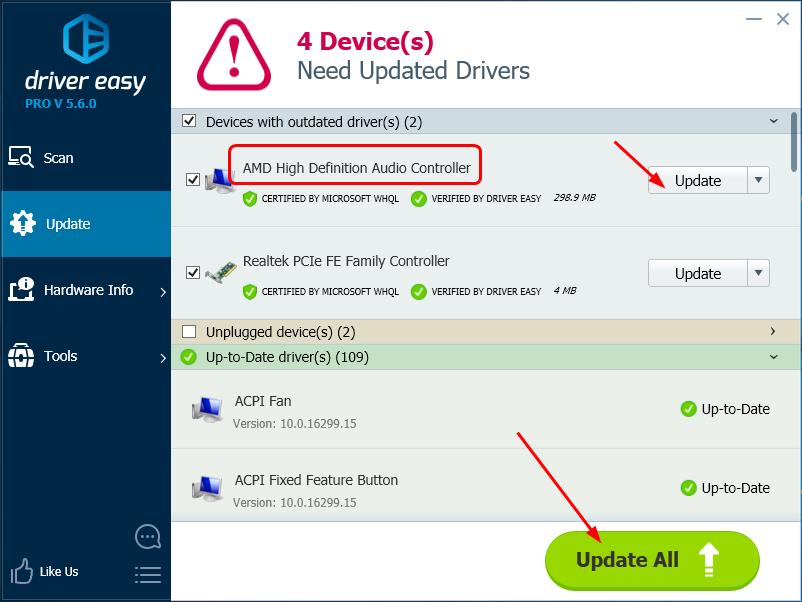
4) Restart your computer to make it take effect.
Here are the solutions to fix A media driver your computer needs is missing. If you have any questions, please feel free to comment below, and we’ll see what more we can do to help.





